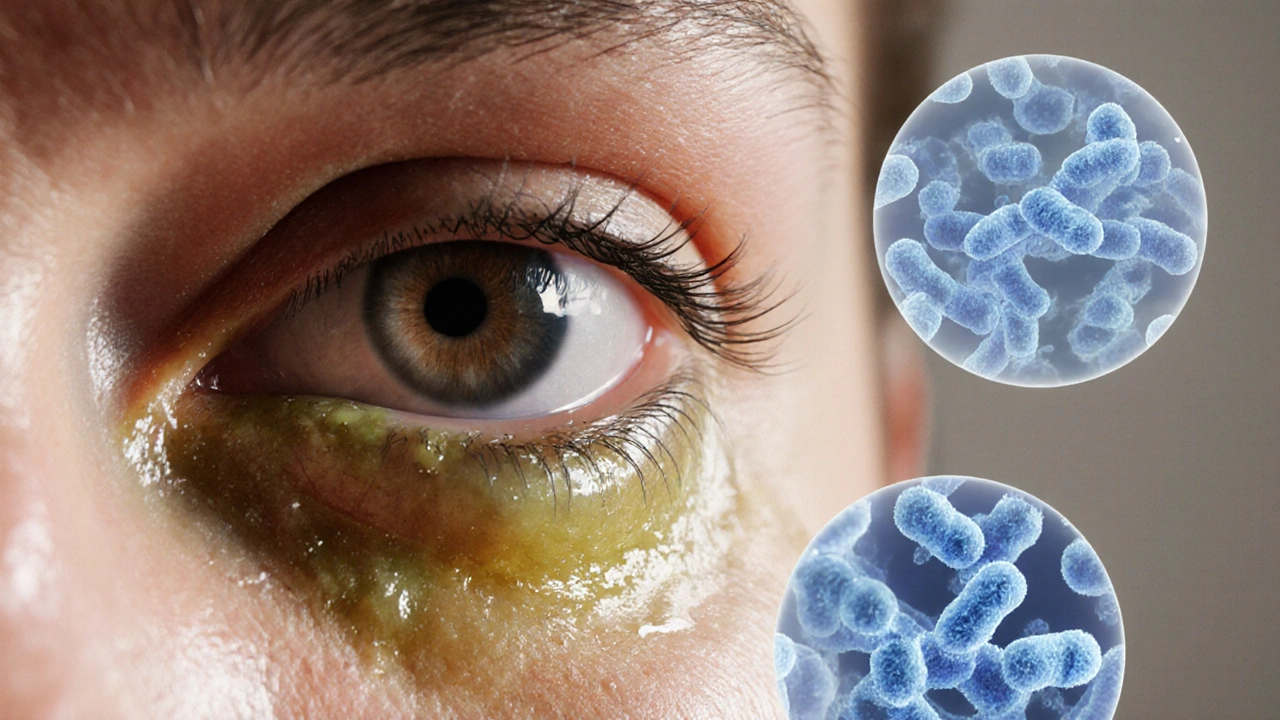
Bacterial Eye Infections vs Conjunctivitis: Key Differences Explained
Learn how bacterial eye infections differ from conjunctivitis, spot key symptoms, get treatment tips, and prevent future eye problems.
When dealing with bacterial eye infection, an infection of the ocular surface caused by bacteria like Staphylococcus aureus or Haemophilus influenzae. Also known as bacterial ocular infection, it can turn a mild irritation into serious vision problems if ignored. conjunctivitis, the inflammation of the thin membrane covering the white of the eye and inner eyelids is the most common symptom, while keratitis, infection of the cornea that can scar vision if not treated promptly represents a more severe progression.
Bacterial eye infection often starts when tiny scratches, contact lens wear, or contaminated hands let germs slip onto the eye surface. bacterial eye infection leads to conjunctivitis in many cases, and the same bacteria can invade deeper layers, causing keratitis. People who wear lenses, have a history of dry eye, or work in dusty environments face higher odds. Even a simple cold sore can spread bacteria to the eye, turning a harmless condition into a painful infection.
Diagnosis relies on a quick visual exam and sometimes a swab. A slit‑lamp examination lets clinicians spot redness, discharge, and corneal clouding. Accurate diagnosis is the first step because the treatment plan hinges on identifying the specific pathogen. Staphylococcus aureus is a common cause, but Pseudomonas aeruginosa becomes a threat for contact‑lens users.
Effective treatment requires antibiotic eye drops or ointments targeted at the offending bacteria. Fluoroquinolones, macrolides, or sulfonamides are typical choices, and doctors often start with a broad‑spectrum drop before tailoring therapy. For severe keratitis, oral antibiotics or even a short course of steroids may be added, but only under close supervision to avoid worsening the infection.
Early intervention can prevent complications like corneal ulceration, scarring, or even permanent vision loss. Patients who notice redness, a gritty feeling, swelling, or thick yellow discharge should seek care within 24‑48 hours. Home care—like washing hands, avoiding contact lenses, and applying warm compresses—supports medical treatment and speeds recovery.
Prevention is surprisingly simple: keep hands clean, replace contact‑lens solutions regularly, and never share eye cosmetics. Regular eye exams catch early signs before they spiral, especially for those with dry eye or allergies, which can predispose the eye to bacterial colonization.
Below you’ll find a curated collection of articles that dig deeper into specific aspects of bacterial eye infection—from the latest antibiotic eye‑drop comparisons to step‑by‑step guides for managing conjunctivitis at home. Whether you’re looking for treatment options, prevention tips, or insight into related conditions like keratitis, the posts below give you practical, up‑to‑date information you can act on right away.

Learn how bacterial eye infections differ from conjunctivitis, spot key symptoms, get treatment tips, and prevent future eye problems.